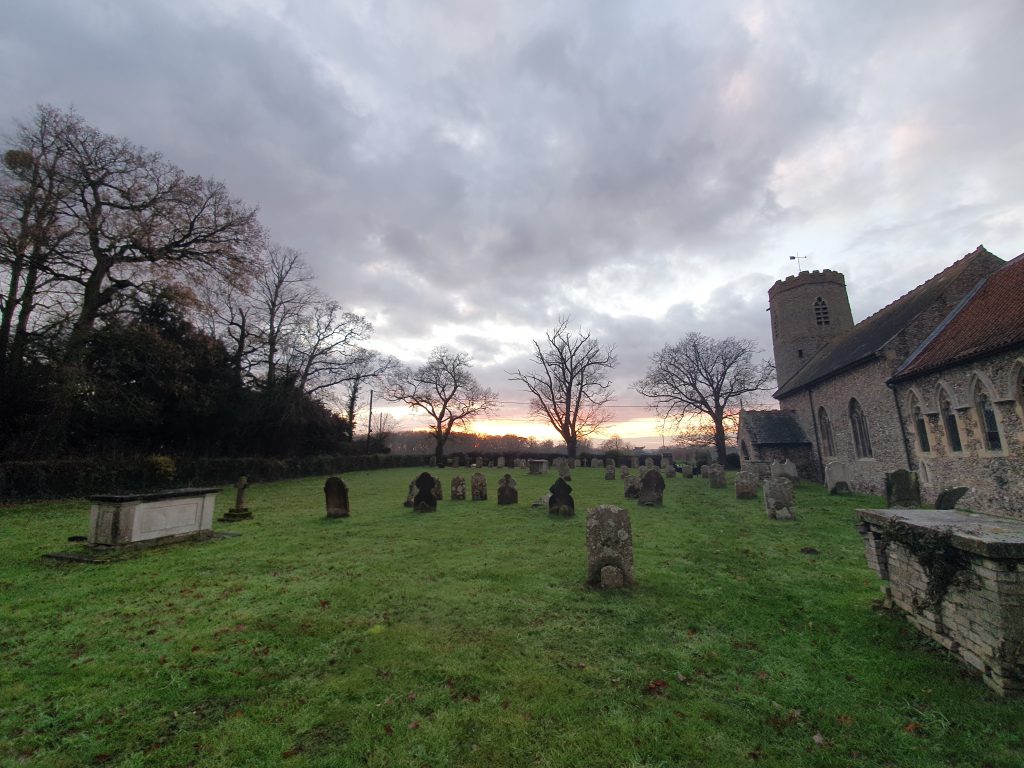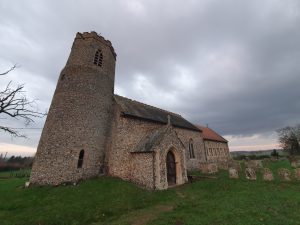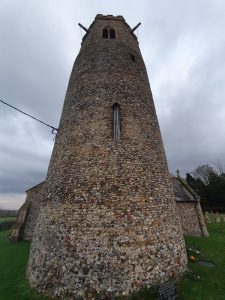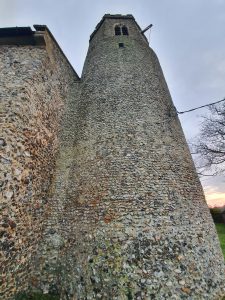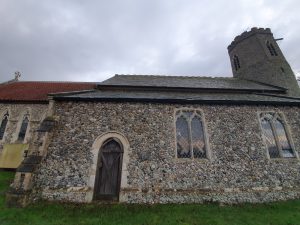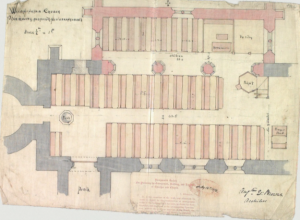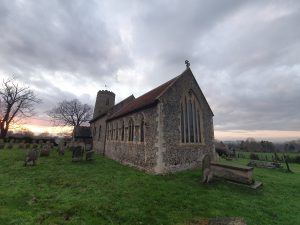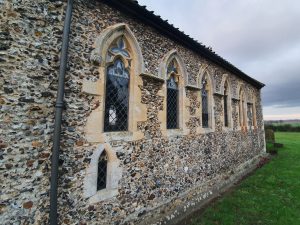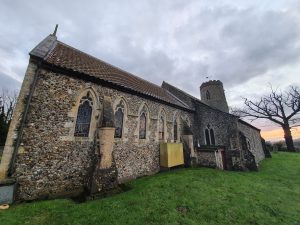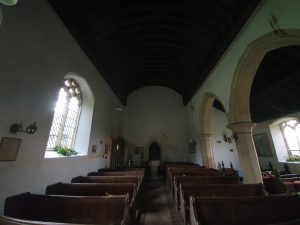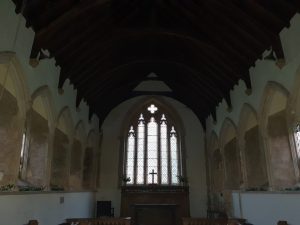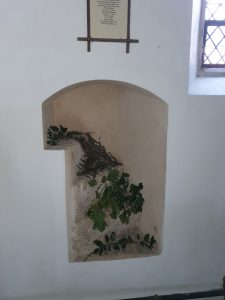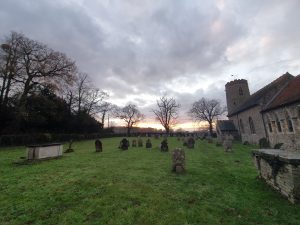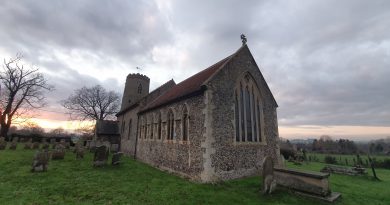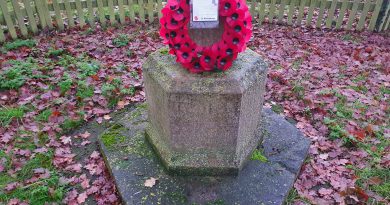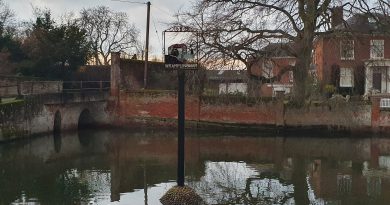Wramplingham – St. Peter and St. Paul Church
Wramplingham has had a church on this site since at least the early eleventh century, but it probably has Saxon origins. The probable situation here is that the nave is the oldest part of the church, then the base of the tower and then the chancel and then the top of the tower. Views differ though to make things more complex.
The tower with its lancet window is likely thirteenth century with a later fourteenth century octagonal top section, although some have dated the whole lot to the fourteenth century. My limited knowledge of architectural history doesn’t allow me to have a view either way…..
The join between the tower and the nave, the latter of which dates from the eleventh or twelfth century.
That Norman door looks out of place there on a Victorian extension, but that’s because they moved it from its previous location opposite the south door.
And here is the plan of that, designed by Augustus Edward Browne in 1872.
The rather beautiful chancel (I liked it, hence the multiple photos), which must have looked quite the thing when it was installed. It’s later than the nave, dating from the mid-fifteenth century.
Internally, looking back towards the tower, and I was pleased that the church was open when we visited.
The quality of the chancel work is visible inside, allowing light to flood in (well, it doesn’t when you visit at near sunset to be fair).
The former steps to the rood loft screen. There’s an article about the church by FR Barff which is located near to the entrance (in very small type) and he mentions that the rood loft survived until 1843, when it was removed by the first of two Victorian restorations. That seems to be a relatively late survival, shame it was taken down.
The peaceful setting of the churchyard as the sun starts to set. There are some very neat lines of graves, particularly near to the tower, with rather large gaps nearby, so I do wonder whether some of them have been reset.
In June 1873, the rector, Charles Philip Paul Jodrell, took the Great Eastern Railway to court on behalf of the church. The church had sold lead from its roof, which was apparently in excellent condition, and they despatched over 6 tons of it by rail. On that journey, the rail network managed to lose 8lbs of it and the church wanted that value back, so they demanded in court 8 shillings and 6 pence (about £28 today). The railway said that this was a perfectly reasonable loss given how much they carried and thought that there was no case. The judge agreed with Great Eastern Railway, but he clearly didn’t want to upset God too much and so he refused costs to be awarded to them.
Anyway, a remote church which has retained its beauty.

